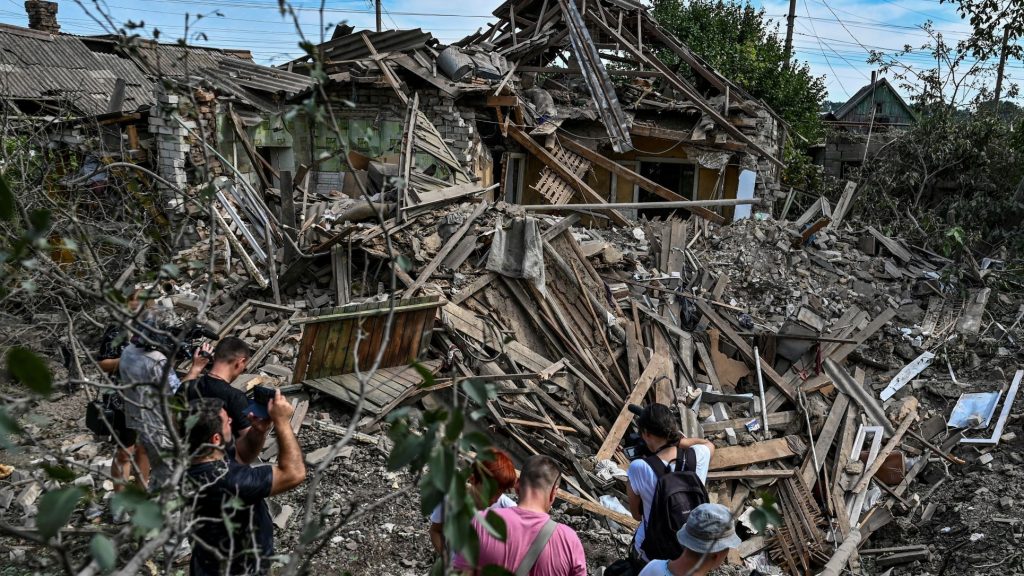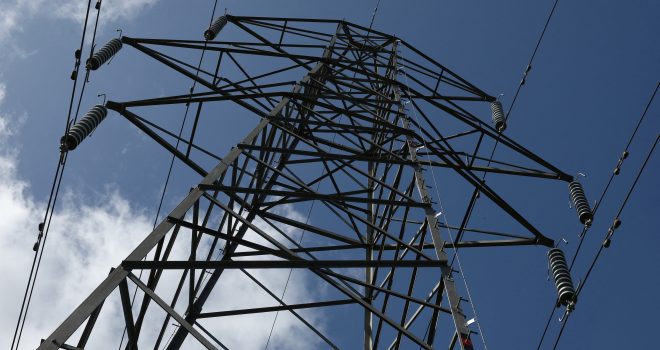Strikes At Ukraine Nuclear Plant Prompt UN Call For Demilitarised Zone

Russia and Ukraine accused each other of shelling Europe’s biggest nuclear power plant, compounding fears of a disaster as the U.N. chief said it should be made a demilitarised zone and Ukraine demanded that Russian forces withdraw from it.
Ukraine’s Energoatom agency said the Zaporizhzhia complex in south-central Ukraine was struck five times on Thursday, including near where radioactive materials are stored. Russian-appointed officials said Ukraine shelled the plant twice, disrupting a shift changeover, Russia’s TASS news agency said.
The U.N. Security Council met on Thursday to discuss the situation and Secretary-General Antonio Guterres called on both sides to stop all fighting near the plant.
“The facility must not be used as part of any military operation. Instead, urgent agreement is needed at a technical level on a safe perimeter of demilitarisation to ensure the safety of the area,” Guterres said in a statement.
Russia seized Zaporizhzhia in March after invading Ukraine on Feb. 24. The plant, near the front line in the fighting, is held by Russian troops and operated by Ukrainian workers.
At the Security Council meeting, the United States backed the call for a demilitarised zone and urged the International Atomic Energy Agency (IAEA) to visit the site.
Russia’s U.N. Ambassador Vassily Nebenzia said the world was being pushed “to the brink of nuclear catastrophe, comparable in scale with Chornobyl”. He said IAEA officials could visit the site as soon as this month.
Reuters could not independently verify the reports from either side about circumstances at the plant.
Ukrainian President Volodymyr Zelenskiy demanded Russia return the plant to Ukraine’s control.
“Only a full withdrawal of the Russians … and the restoration of full Ukrainian control of the situation around the station can guarantee a resumption of nuclear security for all of Europe,” he said in a video address.
France echoed Zelenskiy’s demand and said Russia’s occupation of the site endangered the world.
“The presence and actions of the Russian armed forces near the plant significantly increase the risk of an accident with potentially devastating consequences,” the French foreign ministry said in a statement.
Ukraine and Russia have blamed each other for attacks on the site. Ukraine has also accused Russia of firing rockets at Ukrainian towns from around the captured nuclear power plant in the knowledge it would be too risky for Ukrainian forces to return fire.
Ukraine’s General Staff on Friday reported widespread shelling and air attacks by Russian forces on scores of towns and military bases, especially in the east.
Valentyn Reznichenko, governor of the Dnipropentovsk region, said three civilians, including a boy, were wounded in the town of Marhanets in overnight shelling.
Pavlo Kyrylenko, governor of the Donetsk region, said on Telegram seven civilians had been killed and 14 wounded in the past 24 hours.
RUSSIAN BASE IN CRIMEA
Separately, satellite pictures released on Thursday showed devastation at an air base in Russian-annexed Crimea. It suggested Ukraine may have new long-range strike capability with potential to change the course of the war, Western military experts said.
Images from independent satellite firm Planet Labs showed three nearly identical craters where buildings at Russia’s Saki air base had been struck with apparent precision. The base, on the southwest coast of Crimea, suffered extensive fire damage with at least eight destroyed warplanes visible.
Russia has denied aircraft were damaged and said explosions at the base on Tuesday were accidental. Ukraine has not claimed responsibility.
Referring to the damage, Ukrainian presidential adviser Mykhailo Podolyak told Reuters in a message: “Officially, we are not confirming or denying anything … bearing in mind that there were several epicentres of explosions at exactly the same time.”
Zelenskiy told officials to stop talking to reporters about military tactics, saying such remarks were “frankly irresponsible”. The New York Times and Washington Post newspapers cited unidentified officials as saying Ukrainian forces were responsible for the Crimea attack.
Russia, which seized and annexed Crimea in 2014, uses the peninsula as the base for its Black Sea fleet and as the main supply route for its invasion forces occupying southern Ukraine, where Kyiv is planning a counter-offensive in coming weeks.
COUNTER-OFFENSIVE
The Institute for the Study of War said Ukrainian officials were framing the Crimea strike as the start of Ukraine’s counter-offensive in the south, suggesting intense fighting in coming weeks.
Exactly how the attack on the base was carried out remains a mystery but the impact craters and simultaneous explosions appear to indicate it was hit by a volley of weapons capable of evading Russian defences.
The base is well beyond the range of advanced rockets that Western countries acknowledge sending Ukraine, though within range of more powerful versions Kyiv has sought. Ukraine also has anti-ship missiles which could be used to hit targets on land.
Meanwhile, the U.S. State Department said that Russian officials trained in Iran in recent weeks as part of an agreement on the transfer of drones between the two countries.
U.S. officials said last month that Iran was preparing to provide Russia with up to several hundred drones.
Russia says its “special military operation” is going to plan, to protect Russian speakers and separatists in the south and east. Ukraine and its Western allies say Moscow aims to solidify its grip on as much territory as possible.
Tens of thousands of people have been killed, millions have fled from their homes and cities have been destroyed.
(Reporting by Reuters bureaux; Writing by Cynthia Osterman and Michael Perry; Editing by Stephen Coates, Robert Birsel)




